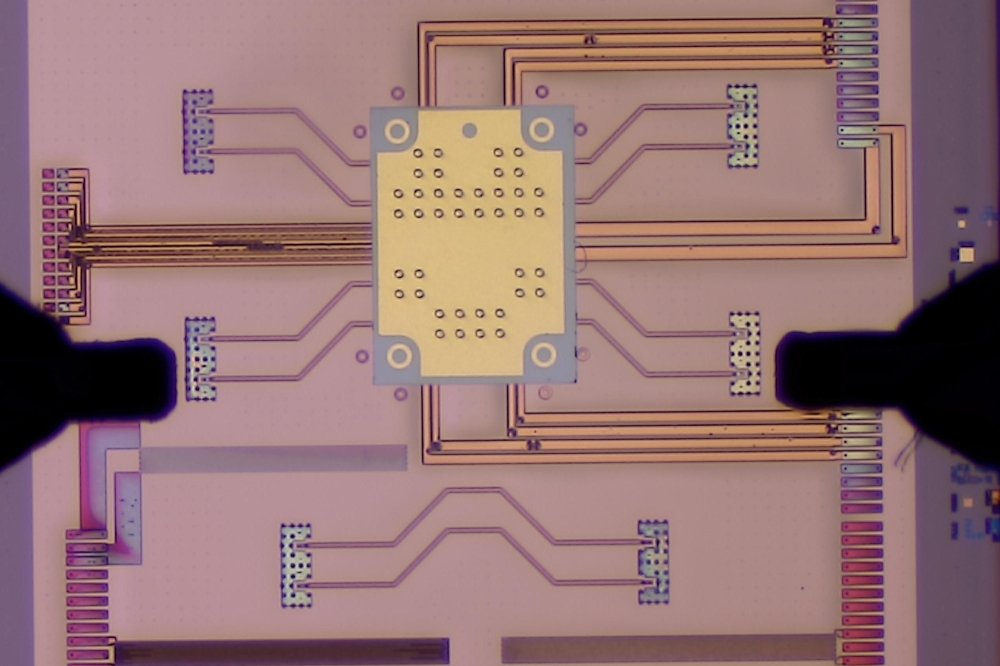Silicon carbide moves further towards commercialization
The conference, which was held in Ibaraki, Japan, on 28 October - 3 November,was made up of 23 technical sessions covering material growth; progress in fabrication and performance of all of the major device types; and theoretical studies. Three panel sessions gave delegates plenty of opportunity to air their views on "A roadmap for SiC technology", "What affects the performance of SiC devices?" and "Ion implantation of SiC".
MOSFETs In his plenary talk, Hiroyuki Matsunami of Kyoto University emphasized the recent achievements in SiC material and device technology, before concentrating on some of the outstanding issues, in particular that of the MOS interface in 4H-SiC. The very low inversion channel mobilities that are achieved on 4H-SiC have for many years prevented the fabrication of the low-resistance MOSFETs that would be able to demonstrate the potential of SiC as a material for power devices. Indeed, the MOS interface and MOSFETs in general attracted a great deal of attention at this year s conference.
Two approaches have emerged as being effective in improving the quality of the MOS interface: the use of nitrogen during post-oxidation annealing and the use of alternative crystal faces for the formation of the MOS channel. Matsunami referred to recent work by his group and others that showed dramatic improvements in MOS channel mobility by using the (11-20) crystal face rather than the more commonly used (0001) face. Results showed a greatly reduced density of interface states, a small temperature dependence of threshold voltage and a negative power law dependence of channel mobility with temperature: T-2.2 compared with T-2.6 for typical MOSFETs grown on the (0001) face.
Results on MOSFETs produced on the (11-20) and (03-38) crystal faces were also encouraging. Senzaki et al. from the Agency of Industrial Science and Technology (AIST), Japan, reported some significant improvements in the channel mobilities of MOSFETs fabricated on the (11-20) face using a hydrogen post-oxidation anneal. A peak mobility of 110 cm2/Vs was reported for an enhancement mode device with an inversion channel. Work by Hirao et al. of Kyoto University focused on the (03-38) face and achieved an improvement in mobility by a factor of four, and an order of magnitude improvement in current drive capability when compared with devices fabricated on the more common (0001) face.
The highest levels of channel mobility and the highest current MOSFETs were, however, reserved for buried channel devices. Using the (11-20) face, Harada et al. of AIST reported MOSFETs with a peak channel mobility of 216 cm2/Vs, while Ryu et al. from Cree reported a peak channel mobility of 195 cm2/Vs for MOSFETs fabricated on the (0001) face. Cree also reported large-area (10.5 mm2) buried channel devices capable of handling currents of up to 10 A with voltage blocking capabilities of up to 2.4 kV.
John Williams (Auburn University, AL) presented results from experiments on the passivation of the SiC-SiO2 interface with nitric oxide, showing an order of magnitude reduction in the level of interface states and a corresponding increase in current drive capability. However, interface state densities were still two orders of magnitude higher than those that are achievable with state-of-the-art Si MOS technology. The technique has been adopted by Cree and was used to demonstrate high current (2 A) large area (2 mm2) lateral MOSFETs with record low on-resistance. Further results from Cree have indicated that nitrous oxide was equally effective in improving the MOS interface.
JFETs and MISFETs Of the other FET devices, JFETs were strongly represented. Peter Friedrichs of SiCED, Germany, expressed his belief that the first commercial SiC switching device would be a SiC JFET cascode connected with a low-voltage Si MOSFET. The device would be targeted as a replacement for high-voltage (up to 2 kV) Si MOSFETs, which are currently employed in switched-mode power supplies and CRT deflection circuits. Claimed advantages over the Si MOSFET included an improved short-circuit capability and better dynamic characteristics. A 3 x 4.1 mm2 1800 V SiC JFET die was presented with a current-carrying capability of 15 A at an on-state voltage of just 2 V. The technology was said to be viable at voltages of up to 4.5 kV.
Further work worthy of note came in the form of a SiC MISFET gas sensor, reported by Anita Lloyd Spetz et al. from Linköping University, Sweden (figures 1 and 2). As part of a collaborative effort involving Volvo, Ford and Swedish company ACREO, sensors have been made with the ability to detect hydrocarbons and ammonia. The sensors have been used in a range of environments at temperatures of up to 500 °C, and they showed excellent stability and reliability.
Stacking faults and bipolars In his plenary presentation, Peter Bergmann from Linköping University provided an overview of a range of defects in SiC, including near-band defects, deep intrinsic defects, the influence of dislocations on lifetime and stacking faults. Since the presentation made by Heinz Lendenmann (ABB, Sweden) and his team at ECSCRM 2000, stacking faults have been attracting a great deal of interest. Lendemann s team put the degradation of the electrical characteristics of bipolar SiC devices down to these faults. Indeed, following ECSCRM 2000, it was mooted that stacking faults might prevent the realization of any long-term reliable SiC bipolar device. Such was the concern over this issue that research groups from around the world combined their efforts to understand the phenomenon better and to identify methods to reduce or eliminate these faults.
Eight papers dealing with stacking faults were presented at ICSCRM 2001. Lendenmann gave a presentation on the characteristics and reliability of high-power SiC diodes, which included time-lapse video sequences of the propagation of stacking faults through diodes under forward bias. He noted that process improvements had eliminated the worst effects of stacking fault-induced degradation - a remark supported by Cree, which had carried out some similar investigations during the past year. Bergmann had previously noted in his talk that stacking faults required a nucleation site - if the nucleation sites were removed from the material, then the problem would be solved. The longer-term goal is therefore to address this fundamental material quality issue.































